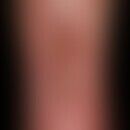Synonym(s)
DefinitionThis section has been translated automatically.
Viscous, dark brown, slightly bitter, then scratchy tasting balsam with a distant scent of vanilla, benzoin or cinnamon from the smoldering trunks of at least 10-year-old Myroxylon balsamum trees, Peru balsam tree. The balsam consists of at least 250 different individual substances (of which about 20 have been identified as contact allergens so far) such as benzoic acid esters (benzyl benzoate and benzyl cinnamate), resins containing benzoic acid and cinnamic acid esters, cinnamic acid, vanillin and coumarin. Peru balsam is not sticky or stringy and does not dry out.
Quality is laid down in the European Pharmacopoeia.
HMPC monograph: not recommended due to high allergenic potency: skin reactions, angioedema, bronchoconstructive and anaphylactic reactions.
ESCOP: not processed.
Commission E-monograph: external: infected, poorly healing wounds, burns, decubitus, chilblains, ulcus cruris, prosthetic pressure sores and haemorrhoids, allergic reactions should be noted.
Empirical medicine: itching, rheumatic complaints, formerly also used for scabies and head lice.
Cosmetics industry: see under Myroxylon pereirae resin (INCI)
Pharmacodynamics (Effect)This section has been translated automatically.
Often acts as a contact allergen. Cross-allergies with wood tar, propolis, fragrances. Indicator for a spice allergy.
You might also be interested in
Spectrum of actionThis section has been translated automatically.
Field of application/useThis section has been translated automatically.
In foods (odorant and flavoring agent, substitute for vanilla), cigarettes, perfumes, shampoos, wound, healing, burn and other ointments (see wound treatment below), mineral and cutting oils.
Peru balsam was previously often used in perfumes and cosmetics under the INCI name"Myroxylon pereirae resin".
Overall, the use of Peru balsam is in sharp decline. Instead, extracts or distillates (essential oils) obtained from the raw balsam by high-vacuum dry distillation are used. These extracts have a significantly lower sensitization potential (Geier J 2017).
PreparationsThis section has been translated automatically.
Nasal balm ointment from WALA Heilmittel GmbH, SOCKETOL paste, Peru-Lenicet®
Note(s)This section has been translated automatically.
Around 15 ingredients of Peru balsam are also contained in propolis bee resin, including some contact allergens.
Ester mixture, above all benzyl benzoate and benzyl cinnamate; furthermore benzoic and cinnamic acid esters, also nerolidol, vanillin, cinnamic acid, benzoic acid, benzyl ferulate and isoferulate.
Positive test reactions to Peru balsam are difficult to interpret (see below Peru balsam retesting). They may indicate sensitization to certain fragrances or to propolis (Geier J 2017).
PatientinformationThis section has been translated automatically.
In case of allergy: Avoid Peru Balsam as contact allergen and if necessary a diet free of Peru Balsam.
LiteratureThis section has been translated automatically.
- Duarte I et al. (2002) Interference of the position of substances in an epicutaneous patch test battery with the occurrence of false-positive results. Am J Contact Dermat 13: 125-132
- Geier J (2017) Screening substances for fragrance allergy: fragrance mixtures and Peru balsam. Allergo J 26: 16-19
- Pfutzner W et al. (2003) Systemic contact dermatitis elicited by oral intake of Balsam of Peru. Acta Derm Venereol 83: 294-295
- Walter P et al (1991) Peru balsam. Dt Dermatol 39: 320-321
- https://arzneipflanzenlexikon.info/perubalsam.php
- https://www.gelbe-liste.de/wirkstoffe/Perubalsam_25601
Blaschek W (2015) Wichtl tea drugs and phytopharmaceuticals. A handbook for practice. Wissenschaftliche Verlagsgesellschaft Munich. S 111-112




